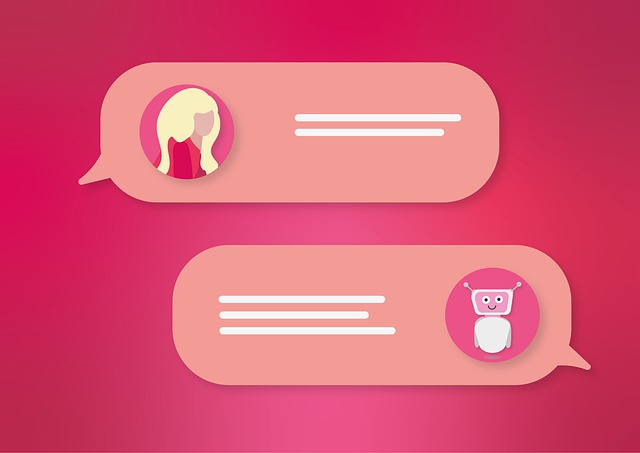
When you follow chatbot best practices, it is possible to design a good chatbot. Chatbots are conversational tools that can enhance website engagement and have many uses, such as helping customers make purchases and searching for information. Therefore, it is recommended to have them in your support suite.
If you are considering designing a chatbot for your business, it’s important to follow the right steps. Chatbots have the ability to expand your customer base since many customers prefer to reach out through channels like chatbots, live chat, and social media. If you are reading this, it means you are interested in designing a chatbot but require a blueprint to get started.
How chatbots help businesses
AI technology enables chatbots to assist companies in reaching a larger customer base, even during periods of high demand when their human customer service representatives are occupied. These chatbots ensure that external communication remains operational every minute of every day. They fulfill the additional role of serving as interactive online repositories of knowledge, allowing individuals to pose inquiries and receive prompt responses, even in the absence of a human operator.
By following a step-by-step approach, businesses can enhance their efficiency in effectively managing their target market even without the presence of additional human resources.
1. Identify your target audience
The first step in chatbot best practices is to identify your target audience. Pay attention to the various ways they prefer to contact your representatives, such as calling a hotline, sending emails, or browsing FAQs and how-to articles.
2. Locate areas of improvement
If you have poor response times, certain metrics should indicate areas for improvement. For example, you may need to enhance chatbots or provide additional training to chat support representatives. It is advisable to address these issues before introducing a new process, as it will yield better results in the long term.
3. Identify the scope of the chatbot
First, determine whether your chatbot can handle a limited number of active requests before implementing a queue. If this is feasible, proceed with the implementation. If not, search for a bot that can handle the demand with a larger capacity.
4. Use the right communication channel
To maximize your investment, ensure that you utilize diverse platforms as certain chatbots are designed specifically for a particular platform. For instance, Manychat is programmed for Facebook Messenger whereas Botsify functions optimally on websites.
5. Give your chatbot a personality
Without a doubt, customers will engage in interactions with this bot, therefore you desire it to behave in line with your brand. If your brand is cheery and vibrant, then you desire your chatbot’s personality to closely align with it.
To ensure that you follow the best practice for chatbots, it is advisable to consult your brand manager.
6. Keep a consumer-centric approach
To ensure optimal user experience, the chatbot should predict and respond to the needs of the users by taking appropriate actions. The chatbot’s response should be communicated using plain and straightforward language, avoiding excessive technical jargon. Additionally, the chatbot’s reply should be concise and direct, providing a link to the self-help section if necessary.
7. Define your chatbot’s role
When considering chatbots, it is important to analyze their role. Are they the initial point of contact, an interactive source of information, or merely a temporary absence message?
By defining the role of your chatterbot, the process can be made much easier.
8. Keep your bot’s UI simple
Your chatbot UI should be simple yet effective. It doesn’t need any fancy features to engage customers as long as it functions perfectly.
9. Plan a conversation tree
In order to introduce a chatbot to a platform, it is essential to carefully plan the conversation tree or flow. The customer’s interaction with the bot will trigger pre-programmed answers, encouraging the customer to be highly responsive.
10. Program instant replies
One of the most important chatbot best practices is programming instant replies. Customers anticipate prompt responses when engaging with a chatterbot, and the AI is designed to immediately answer all incoming questions and requests.
11. Reengage the user
To prevent users from getting distracted whilst waiting for a response during system busyness, make sure to employ pop-up notifications when users become idle after a specific period of time.
12. Offer human-like interactions
After distinguishing between rule-based bots and AI chatbots, the next step is to understand that rule-based chatbots involve scripting conversations based on prior interactions with customers, while AI chatbots utilize NLP or Natural Language Processing to simulate human-like responses. However, what follows this process?
One of the recommended practices for chatbots is to openly acknowledge that they are using a bot for customer service. When you incorporate features in a chatbot to mimic human interaction, this is referred to as skeuomorphism. Nevertheless, chatbots frequently have the ability to mislead customers into believing they are engaging with a human.
Although both live chat and chatbots are beneficial for offering immediate assistance, chatbots lack the empathetic qualities possessed by human agents. This distinction between chatbots and live chat lies in their respective abilities to empathize. As a result, it is crucial to be transparent and inform the user that they are engaging with a bot. This practice aids in managing expectations effectively.
Continuing, we will discuss the importance of being open about the constraints of your chatbot. The least favorable chatbot strategy involves making exaggerated claims and failing to meet expectations. Keep reading to resolve this issue.
13. Be transparent about limitations
When it comes to machine understanding, expecting a level of competence equal to humans is a significant expectation. This is particularly true in customer support, where the absence of empathy can be highly noticeable. Hence, it is important to acknowledge that your chatbot may not be able to resolve every interaction satisfactorily.
If you are unable to resolve the customer’s issue using the chatbot, it is not recommended to refuse access to other support channels. Instead, it is important to anticipate that the customer may desire to communicate with a human agent. Recognize this preference and guide the conversation accordingly.
14. Best practices for customization
When customizing your chatbot, the initial step is to consider the desired flow of the conversation. Every chatbot maker offers various methods to assist with this. For example, with ProProfs Chat, you have the ability to pose multiple-choice or open-response questions and allocate a specific function to each answer.
We will now talk about the dos and don’ts of customizing chatbots. Here are a few suggestions:
- Create a grammatically correct script.
- Use emojis and smileys to lace the conversation with humor and spontaneity.
- Use rich media elements in your chatbot.
- List the chatbot’s functionality upfront by designing messages to convey that.
- Customize the chatbot to fit your brand’s look and aesthetic.
- Create design elements that make it easy for your customers to leave.
By following these step-by-step instructions, you can improve the conversational interfaces of your chatbot to effectively engage your audience. Utilizing these best practices for customization will allow you to create a chatbot that aligns seamlessly with your brand.
15. Use the right type of chatbot
In accordance with what was previously stated, there are two types of chatbots: rule-based and AI bots. Each bot comes with its own advantages and disadvantages. Rule-based chatbots, also referred to as decision tree bots, are limited to providing responses that they have been trained on. They can create conversational flows by outlining scripts.
– The following are some advantages of utilizing such chatbots.
- They are generally easier to train.
- These chatbots integrate with legacy systems readily.
- They can include media elements to boost interactivity.
- They are not limited to text interactions.
The benefits of an AI chatbot are that they utilize machine learning to determine the intention of the query and can provide answers to complex questions through NLP.
- It learns from information gathered.
- Improves as it interacts with users.
- It can make decisions automatically.
- It can pick up many languages.
When choosing a rule-based bot, it is necessary to consider these chatbot benefits, as AI bots, although more advanced, may not always be the ideal choice. Here are a few aspects to concentrate on:
- The goal you are leading your team towards.
- If you are interested in your bot as an FAQ resource.
- Your chatbot will screen users to direct them to human agents.
- You don’t have a large pool of visitors to train your bot.
If rule-based bots are unable to effectively handle customer queries, you can focus on improving those flaws in your customer service. Rule-based bots exhibit considerable flexibility in dealing with customer cases.
16. Using analytics smartly
By applying analytics, you can generate ideas for actively involving customers. Utilizing customer engagement strategies, you can guide customers throughout their entire journey. Creating a chatbot in a systematic manner entails enhancing our comprehension of the customer journey and behavior.
Analytics helps in understanding the customer by providing insights into their time spent and engagement quality, as that is where you only have numbers. Therefore, these versatile tools are currently the most effective brand touchpoint.
By keeping track of form submissions on your chatbot, you can devise a lead generation strategy that experiments with the phrasing and timing of the form. Analyzing pertinent customer data will provide insight into what is effective, allowing you to adjust your strategy accordingly.
Side notes, do not add new information or remove any information while rephrasing the following text step by step: – Side notes should not include additional information or omit any existing information when rephrasing the following text sequentially.
The use of chatbots is rapidly becoming the most effective means to increase conversions, generate leads, and enhance the customer experience.
To improve customer service, it is crucial to select the appropriate chatbot. Once you have chosen the suitable chatbot, you must determine your target audience to tailor its tone of voice. Then, incorporate customization features to enhance its visual appeal.
The discipline of Chatbot UI focuses on enhancing the customer experience. We have covered certain best practices for designing the conversational and design interface that can assist you in creating an excellent customer experience.





